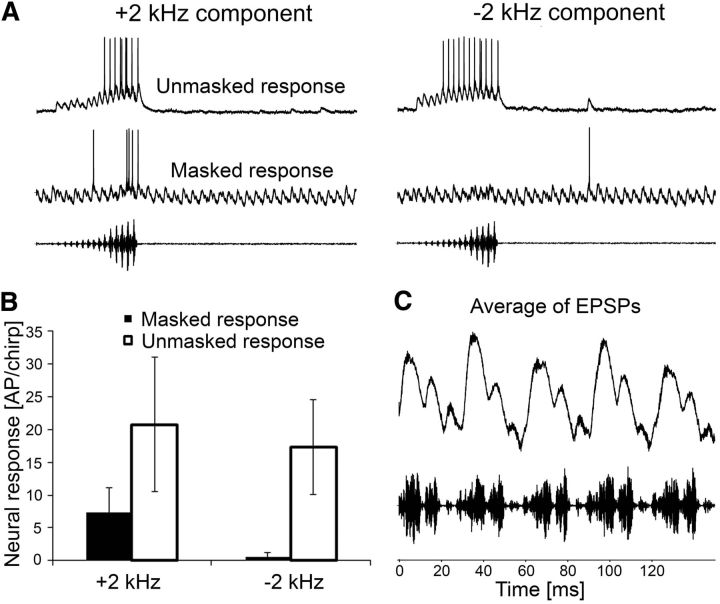Figure 6.
Importance of the 2 kHz component in the chirp for release from masking. A, Characteristic intracellular responses of BFD-1 to chirps including the 2 kHz component (left) and to chirps with the 2 kHz component reduced through high-pass filtering (right). Responses are given for unmasked and masked condition (top and bottom recording, respectively). Note the ongoing, subthreshold EPSP activity in response to the continuous trill. B, Average responses to chirps with and without the 2 kHz component (N = 3 ± SD BFD-1 neurons). C, Averaged EPSPs in a BFD-1 neuron in response to the double syllables of the trill.

